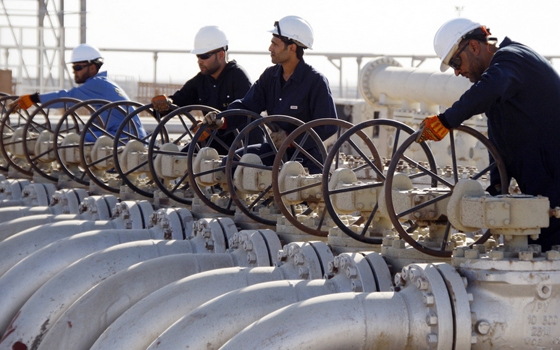Iraq unveiled an ambitious energy strategy that aims to raise $6 trillion (4.5 trillion euros) from oil and gas sales by 2030 and massively increase local power generation, a major domestic need.
The Integrated National Energy Strategy would see Iraq invest some $620 billion in the sector over nearly 20 years in a bid to substantially increase living standards and employment levels in a country badly hit by decades of conflict and sanctions.
"The strategic goals of the plan are to meet local energy needs, maximize government revenues, encourage economic diversification and improve the standard of living and create jobs," said Thamir Ghadhban, a former oil minister and the head of Prime Minister Nuri al-Maliki's advisory committee.
It recommends that Iraq increase its oil production from about 3.4 million barrels per day (bpd) now to 4.5 million bpd by 2014, and double that by 2020 in its "medium" scenario.
It forecasts that all domestic energy requirements could be met by 2022.
It also calls for diversifying Iraq's oil-dependent economy to add 10 million new jobs, with planners arguing that by 2020, non-energy sectors of the economy will grow faster than oil and gas.
It projects that Iraq will raise about $6 trillion in revenues by 2030, about 85 percent of which will come from oil exports.
Those targets appear ambitious for a country where efforts to boost oil output and distribute energy revenues have been stymied by political dysfunction and poor security.
Iraq has sought in recent years to dramatically increase its oil production in order to fund reconstruction of its battered economy and dilapidated infrastructure.
But while output has increased, unemployment remains high and Iraqis frequently complain about a lack of improvement in daily living standards.
Tempers run particularly high during the country's boiling summer, when most residents receive only a few hours of government-supplied power per day.
AFP
14 June






















































